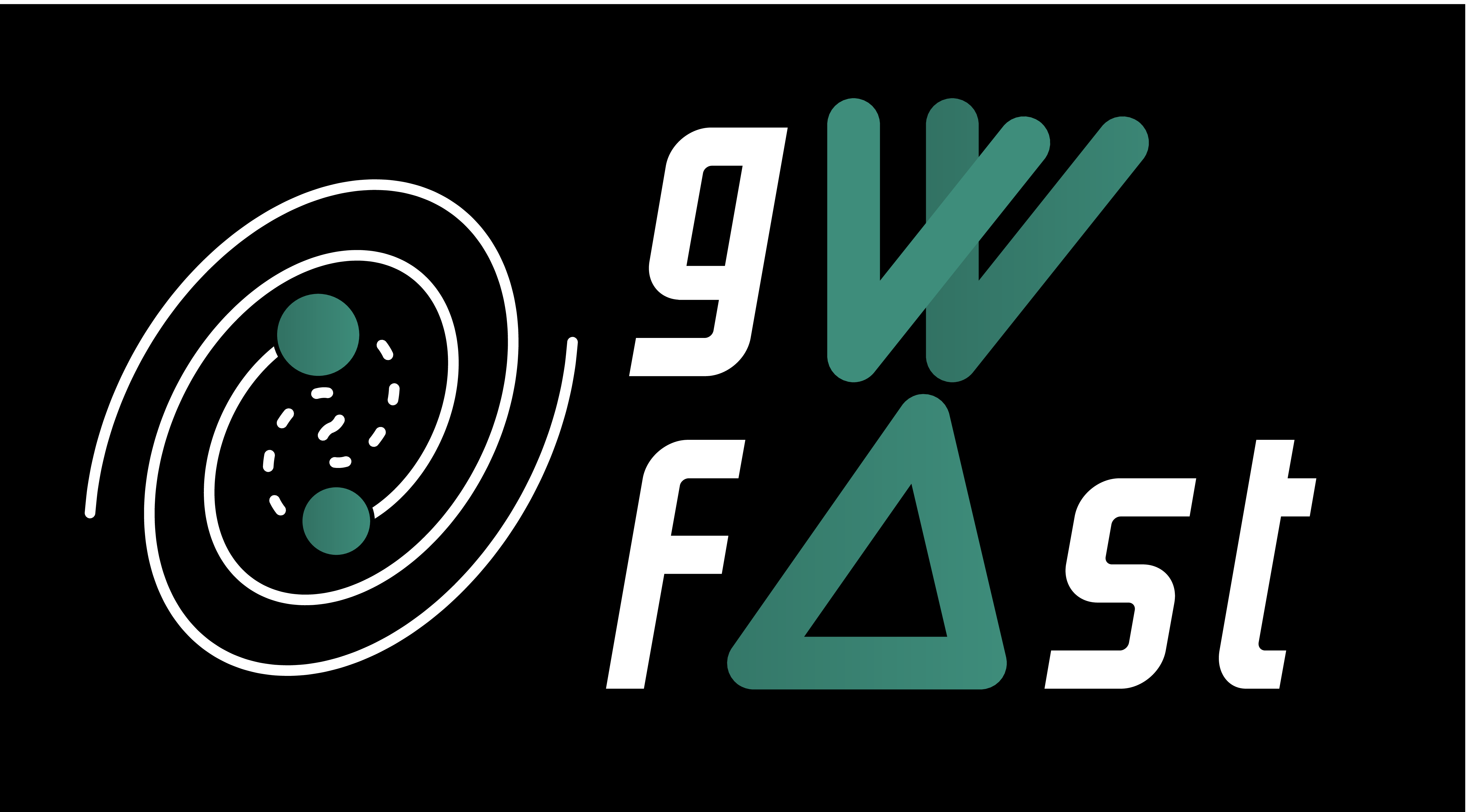Fisher Information Matrix package for GW cosmology, written in Python and based on automatic differentiation.
The detail of implementations and results can be found in the papers arXiv:2207.02771 and arXiv:2207.06910.
Waveforms are also separatley released as WF4Py.
Developed by Francesco Iacovelli and Michele Mancarella.
The organisation of the repository is the following:
gwfast/gwfast/
├── gwfastGlobals.py
Physical constants, positions and duty cycles of existing detectors
├── gwfastUtils.py
Auxiliary functions: angles and time conversions, ...
├── waveforms.py
Abstract class WaveFormModel; different sublasses for each wf model - TaylorF2, IMRPhenomD, ...
├── signal.py
A class to compute the GW signal in a single detector (L shaped or triangular), the SNR and the Fisher matrix
├── fisherTools.py
Covariance matrix and functions to perform sanity checks on the Fisher - condition number, inversion error, marginalization, localization area, plotting tools
├── network.py
A class to model a network of detectors with different locations
gwfast/psds/
Some detector Power Spectral Densities
gwfast/WFfiles/
Text files needed for waveform computation
gwfast/run/
Script to run in parallel on catalogs
gwfast/docs/
Code documentation in Sphinx
gwfast has its documentation hosted on Read the Docs here, and it can also be built from the docs directory.
To install the package without cloning the git repository, and a CPU-only version of JAX
pip install --upgrade pip
pip install gwfast
or
pip install --upgrade pip
pip install --upgrade "jax[cpu]"
pip install git+https://github.com/CosmoStatGW/gwfast
To install a JAX version for GPU or TPU proceed as explained in https://github.com/google/jax#installation.
If willing to use numerical differentiation, a patch has to be applied to numdifftools. This can be done by running the following command while being in the environment gwfast has been installed into
patch $(python -c "import site; print(site.getsitepackages()[0])")"/numdifftools/limits.py" $(python -c "import site; print(site.getsitepackages()[0])")"/gwfast/.patch/patch_ndt_complex_0-9-41.patch
All details are reported in the accompanying paper arXiv:2207.06910 and some examples are in the gwfast_tutorial notebook.
To initialise a waveform object simply run, e.g.
mywf = waveforms.IMRPhenomD()(more details on the waveforms are available in their dedicated git repository WF4Py)
and to build a signal object
MyDet = signal.GWSignal(mywf, psd_path= 'path/to/Detector/psd',
detector_shape = 'L', det_lat=43.6,
det_long=10.5, det_xax=115.) More signal objects can be used to form a network
myNet = network.DetNet({'Det1':MyDet1, 'Det2':MyDet2, ...}) Then computing SNRs and Fisher matrices is as easy as
SNRs = myNet.SNR(events)
FisherMatrs = myNet.FisherMatr(events) where events is a dictionary containing the parameters of the chosen events.
Finally, to compute the covariance matrices it is sufficient to
CovMatr(FisherMatrs, events) For a list of features implemented after the publication of arXiv:2207.06910 see the NEW_FEATURES file and the new_features_tutorial notebook 
If using this software, please cite this repository and the papers arXiv:2207.02771 and arXiv:2207.06910. Bibtex:
@article{Iacovelli:2022bbs,
author = "Iacovelli, Francesco and Mancarella, Michele and Foffa, Stefano and Maggiore, Michele",
title = "{Forecasting the Detection Capabilities of Third-generation Gravitational-wave Detectors Using GWFAST}",
eprint = "2207.02771",
archivePrefix = "arXiv",
primaryClass = "gr-qc",
doi = "10.3847/1538-4357/ac9cd4",
journal = "Astrophys. J.",
volume = "941",
number = "2",
pages = "208",
year = "2022"
}
@article{Iacovelli:2022mbg,
author = "Iacovelli, Francesco and Mancarella, Michele and Foffa, Stefano and Maggiore, Michele",
title = "{GWFAST: A Fisher Information Matrix Python Code for Third-generation Gravitational-wave Detectors}",
eprint = "2207.06910",
archivePrefix = "arXiv",
primaryClass = "astro-ph.IM",
doi = "10.3847/1538-4365/ac9129",
journal = "Astrophys. J. Supp.",
volume = "263",
number = "1",
pages = "2",
year = "2022"
}




